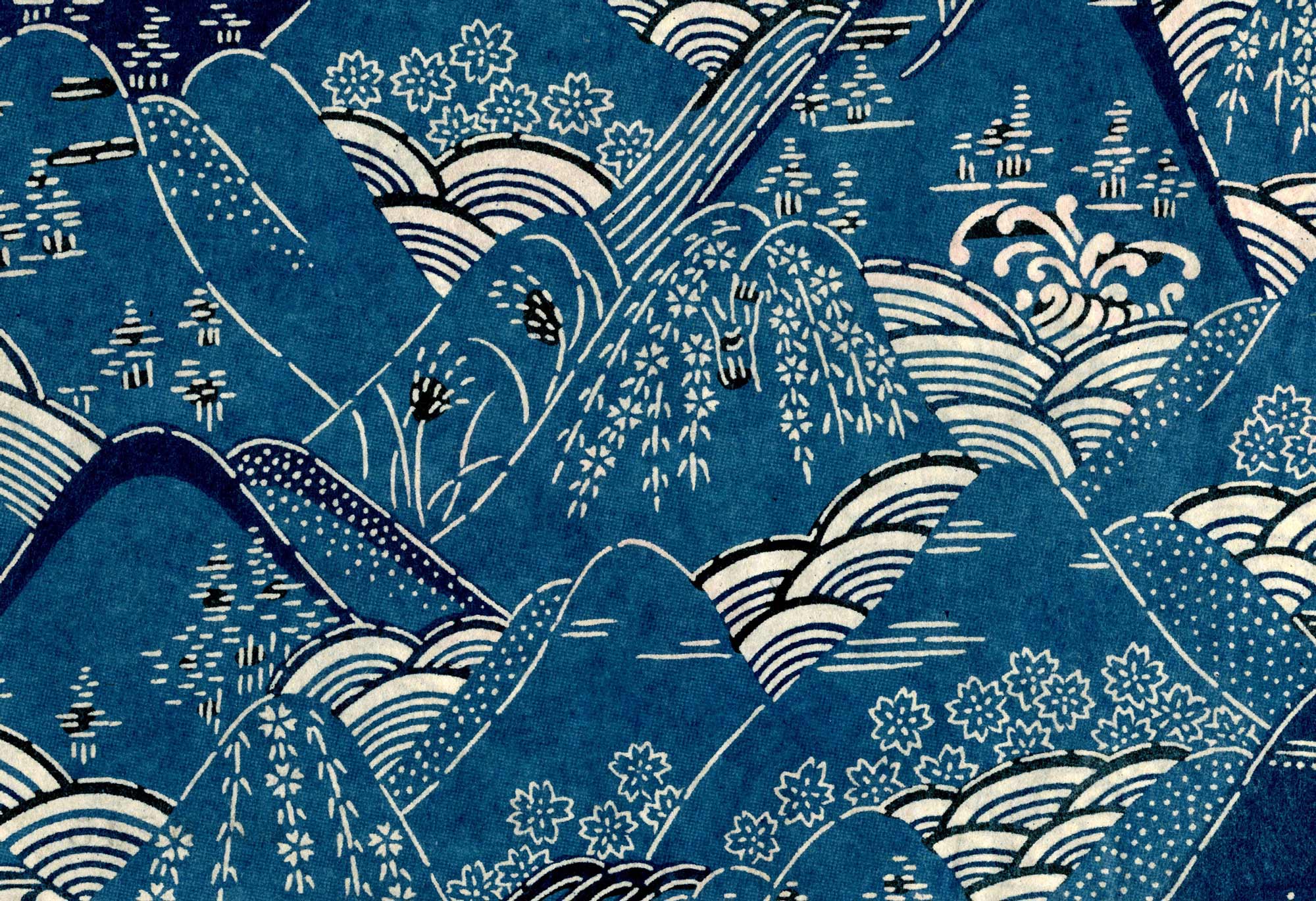Katazome a Japanese method of dyeing fabrics using a resist paste applied through a stencil. katagami (stencils) are hand cut from kozo hand-made paper that has been stiffened with shibugaki (persimmon juice).
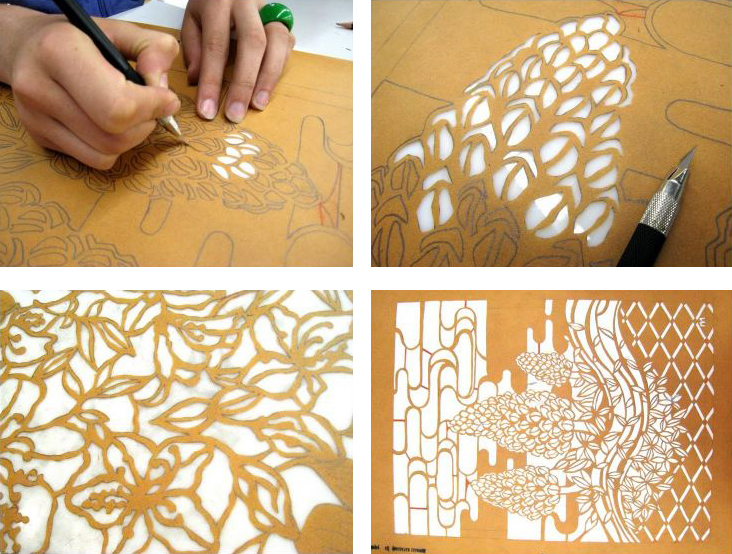
Open motifs are held together with fine silk thread. Large open areas are reinforced with fine silk threads. Pre-shrunk silk is stretched over a wooden board, then a stencil is placed on the material and a resist paste (rice flour, bran, and blue pigment) is spread over the stencil with a spatula.
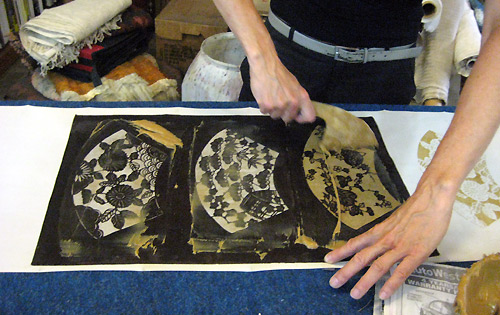
Silk is stretched lengthwise with harite clamps that are tied to posts, and the width is held taut with shinshi that arch over the fabric (pins at each end of the shinsi pierce the selvedge of the cloth and keep them in place).
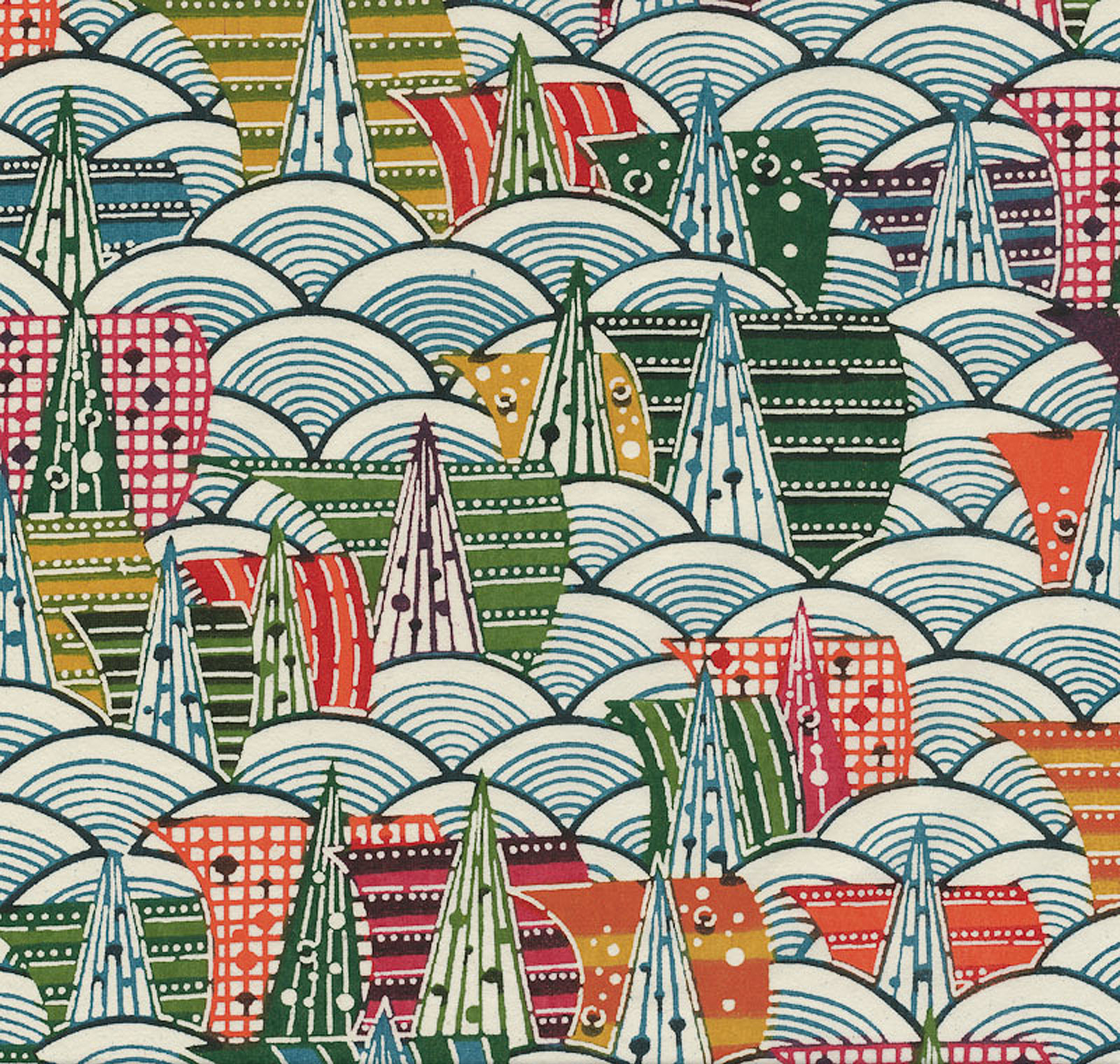 Soybean sizing is brushed onto the silk, then a variety of colorful dyes are painted onto the resist-free areas. Colorful dyes are hand painted onto the stenciled, stretched silk.
Soybean sizing is brushed onto the silk, then a variety of colorful dyes are painted onto the resist-free areas. Colorful dyes are hand painted onto the stenciled, stretched silk.
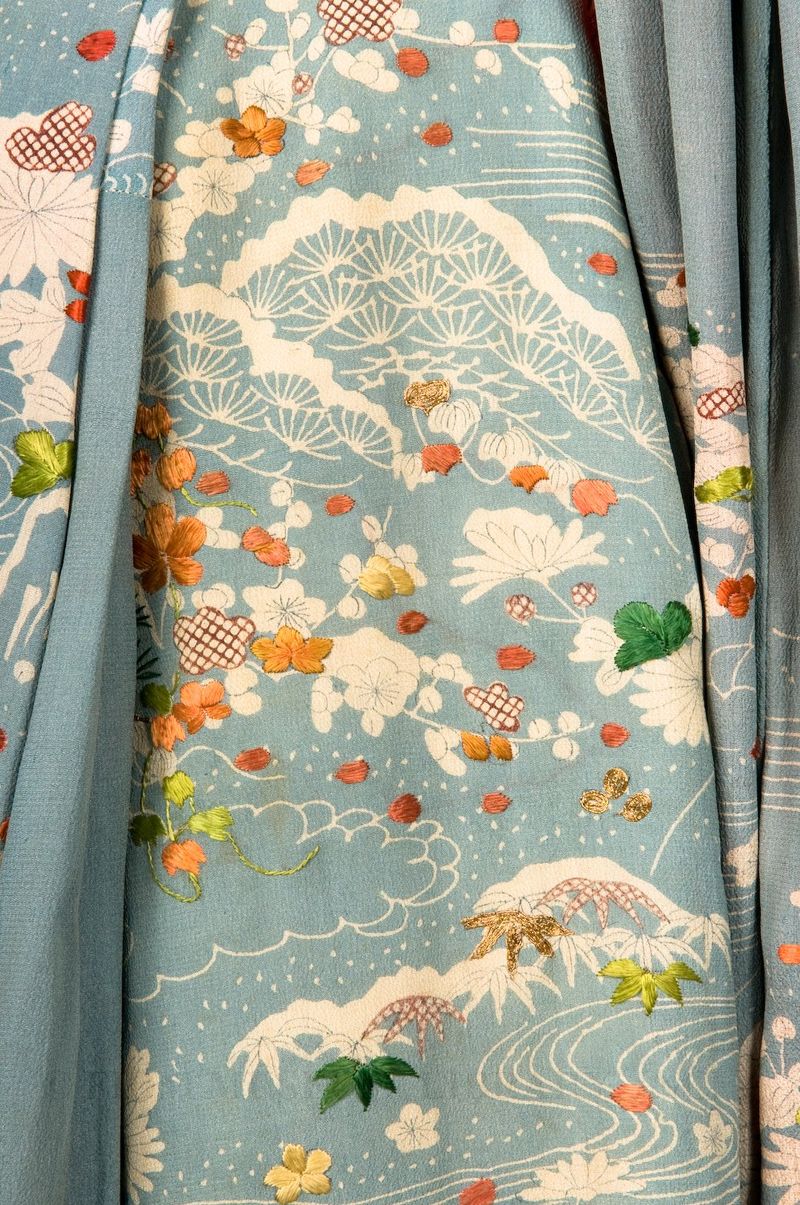
Based on traditional kimono-printing techniques, patterned papers were developed in Kyoto during the 20th century.
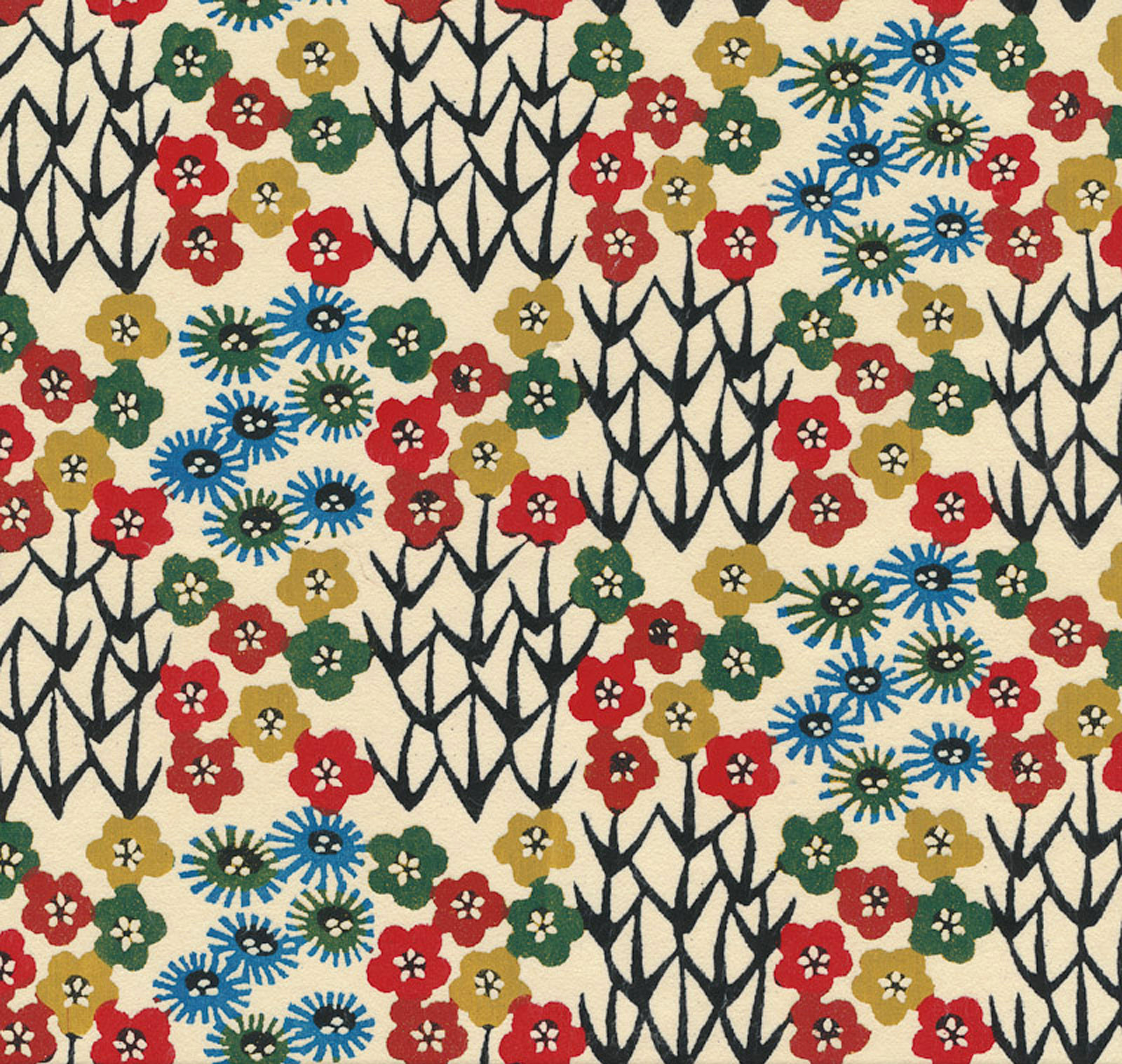
Using persimmon-dyed kozo as the stencils, and aided by paste and "Kojiro" (soy bean juice), the pigments absorb deeply into the paper to produce long-lasting colour and the unmistakable look of a print truly made by hand. These papers are great for book covers and boxes, cards, and lampshades.
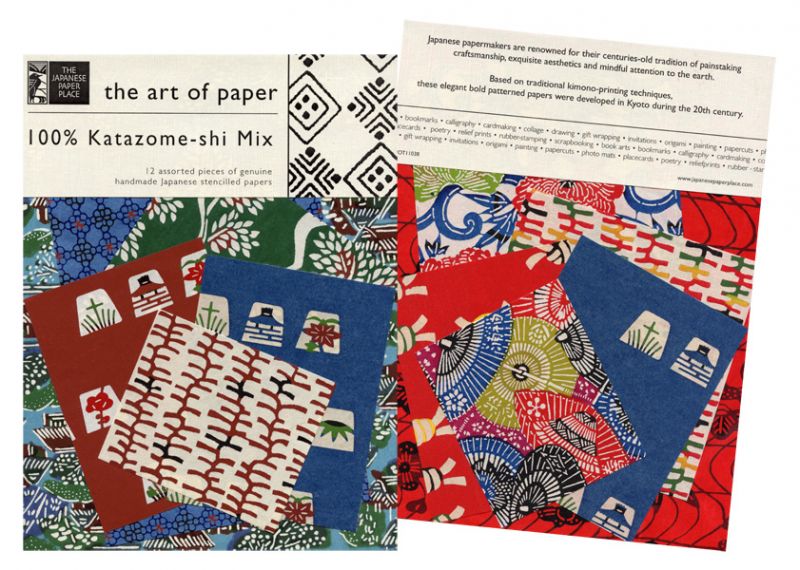
Most of this information came from either iweb.tntech.edu/cventura/katazome.htm or nautilus-fiberarts.com/NewNFA/01AboutKatazome/index.php
